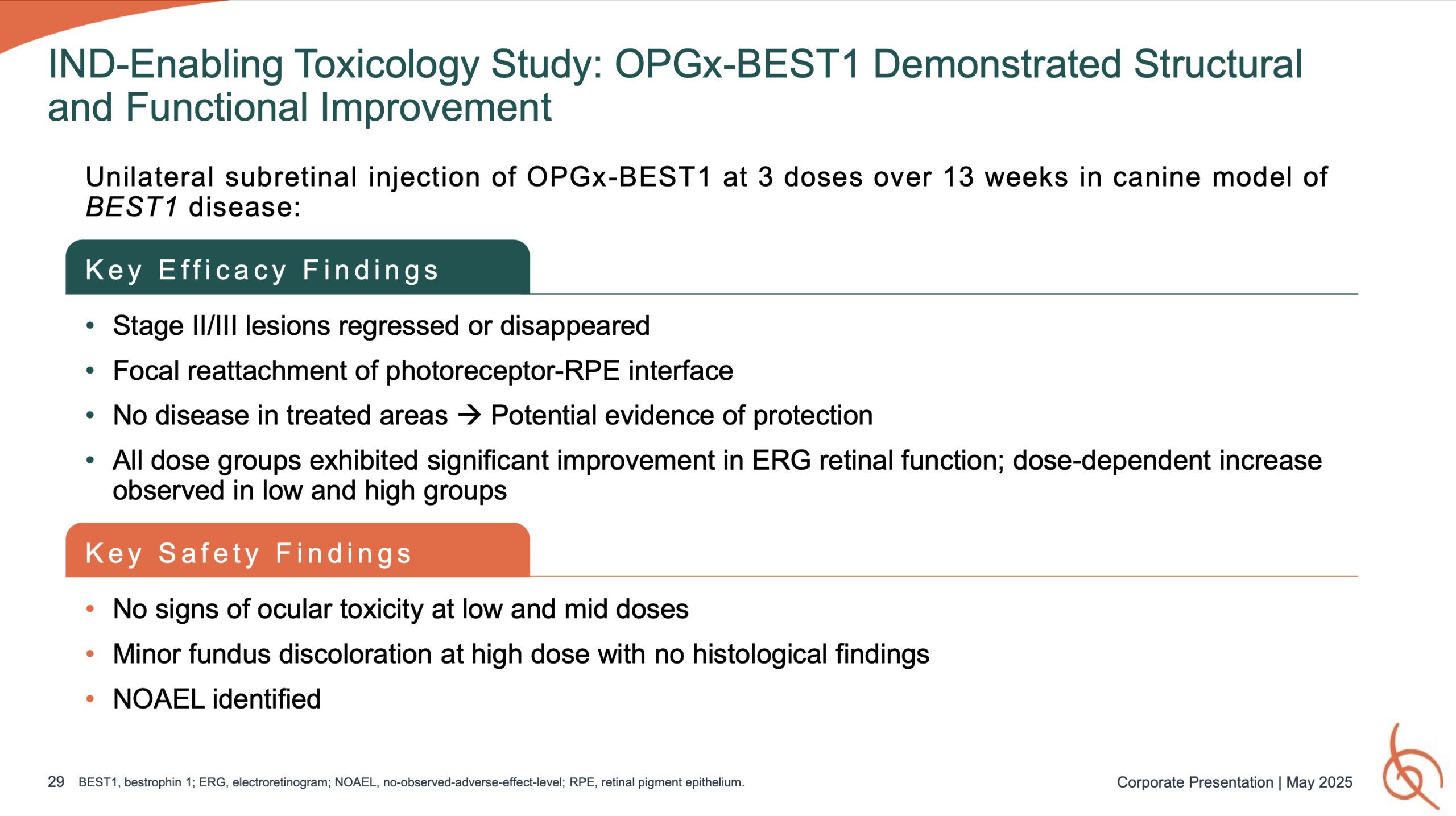Opus Genetics (Nasdaq: IRD), a clinical-stage biotechnology company focused on gene therapies for inherited retinal diseases, continues to gain momentum in 2025 with advancements across its ophthalmic pipeline. The company’s lead programs target gene mutations associated with Leber congenital amaurosis (LCA5), bestrophinopathy (BEST1), and retinitis pigmentosa (MERTK). Building on the strength of its scientific platform and early clinical data, Opus is establishing a growing presence in ophthalmic innovation and precision gene therapy development.
Promising One-Year Data and FDA Recognition for Opus’ Lead Eye Gene Therapy
In early May, Opus presented 12-month data from its Phase 1/2 study of OPGx-LCA5 at ARVO 2025. LCA5 is an early-onset retinal degeneration that affects approximately 200 people in the U.S. The data demonstrated sustained efficacy in adult patients with Leber congenital amaurosis caused by biallelic mutations in the LCA5 gene. Notably, improvements observed at six months were maintained at one year, including gains in cone-mediated vision, visual acuity, and functional endpoints like mobility testing and retinal sensitivity. The therapy was well tolerated, with no dose-limiting toxicities or serious adverse events reported.
These results were followed by a significant regulatory milestone: The U.S. Food and Drug Administration (FDA) granted Regenerative Medicine Advanced Therapy (RMAT) designation to OPGx-LCA5. The designation recognizes the potential of this program to address a serious unmet need and provides access to expedited development pathways. It also marks the company’s growing alignment with the FDA through initiatives such as the Chemistry, Manufacturing and Controls (CMC) Development and Readiness Pilot program.
Expanding the Pipeline with BEST1 and MERTK Programs
Opus is also advancing OPGx-BEST1, its investigational gene therapy for bestrophinopathy, a macular degenerative condition driven by mutations in the BEST1 gene. At the American Ophthalmological Society meeting, Opus shared preclinical findings from a canine model of BEST1-related IRD, showing resolution of retinal micro-detachments and restoration of photoreceptor function. These insights are helping to define endpoints for the upcoming Phase 1/2 clinical trial, slated to begin later in 2025 with initial data expected in the first quarter of 2026.

On the research front, Opus continues to invest in next-generation endpoints for IRD clinical trials. At the Retinal Imaging Biomarkers and Endpoints Summit later this month, Chief Scientific and Development Officer Dr. Ash Jayagopal will present on the use of virtual reality-guided orientation and mobility testing. This approach links structural changes to functional outcomes and may offer a pathway to validate new primary endpoints in rare disease studies.
At the American Society of Gene & Cell Therapy (ASGCT) Annual Meeting, Opus presented preclinical data on OPGx-MERTK for retinitis pigmentosa. The study showed photoreceptor preservation and improved retinal function in a Royal College of Surgeons rat model of retinal degeneration, supporting further development of the program for MERTK-associated RP, a rare subset of this disease.
Positioning for Long-Term Impact in IRD
Backed by strong early clinical signals, regulatory momentum, and world-class scientific leadership, Opus Genetics is charting a path to redefine what is possible in inherited retinal disease treatment. With a growing pipeline and a strategic focus on both precision development and patient-centered outcomes, the company aims to deliver lasting impact for IRD patients and establish new benchmarks in gene therapy innovation.
This article contains sponsored content. Please see our disclaimer at: https://prismmarketview.com/disclaimer/
The post Opus Genetics Broadens Reach in Inherited Retinal Disease with Strong Clinical Momentum and RMAT Recognition appeared first on PRISM MarketView.
